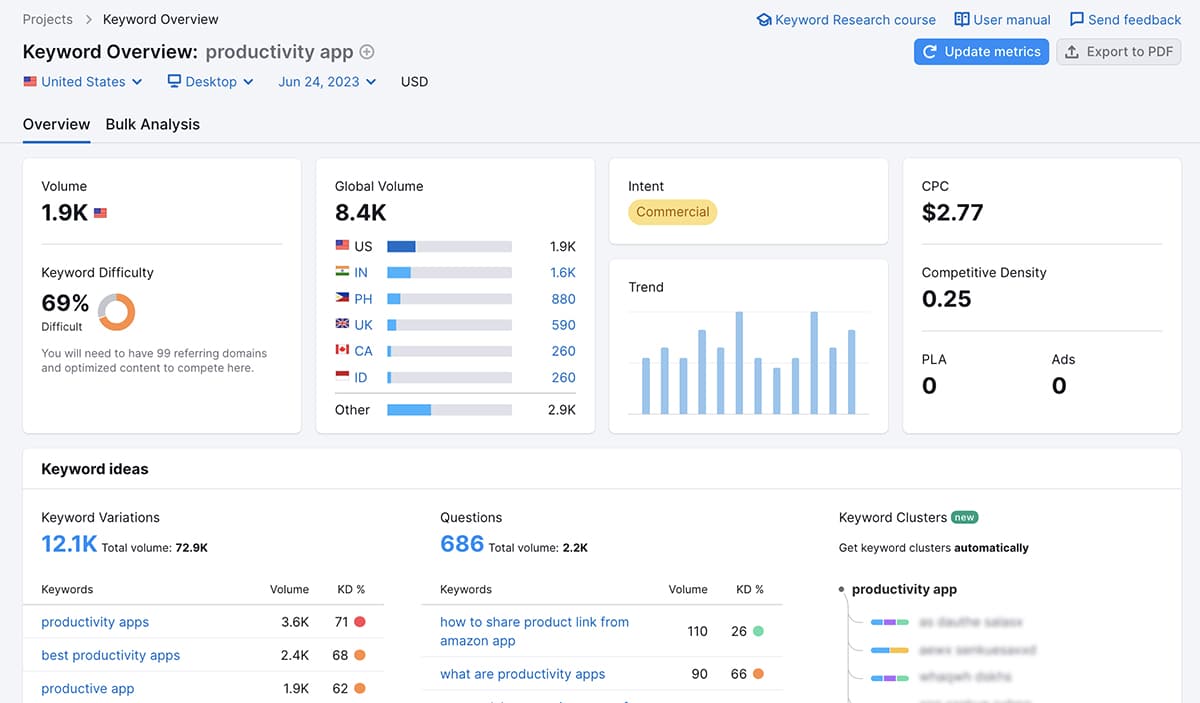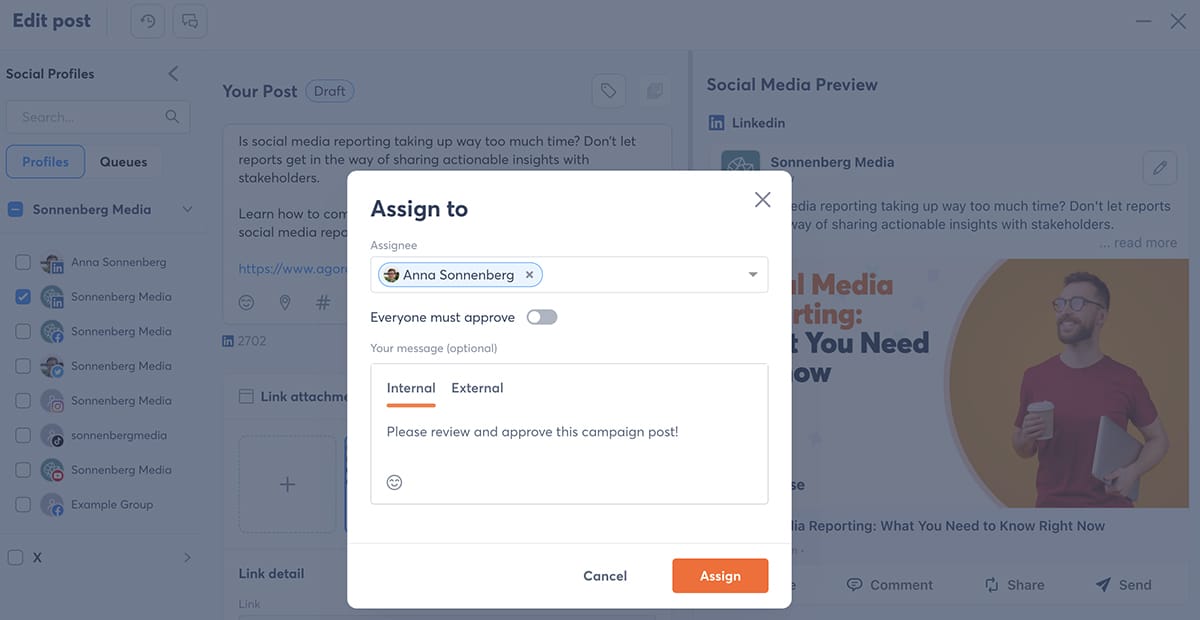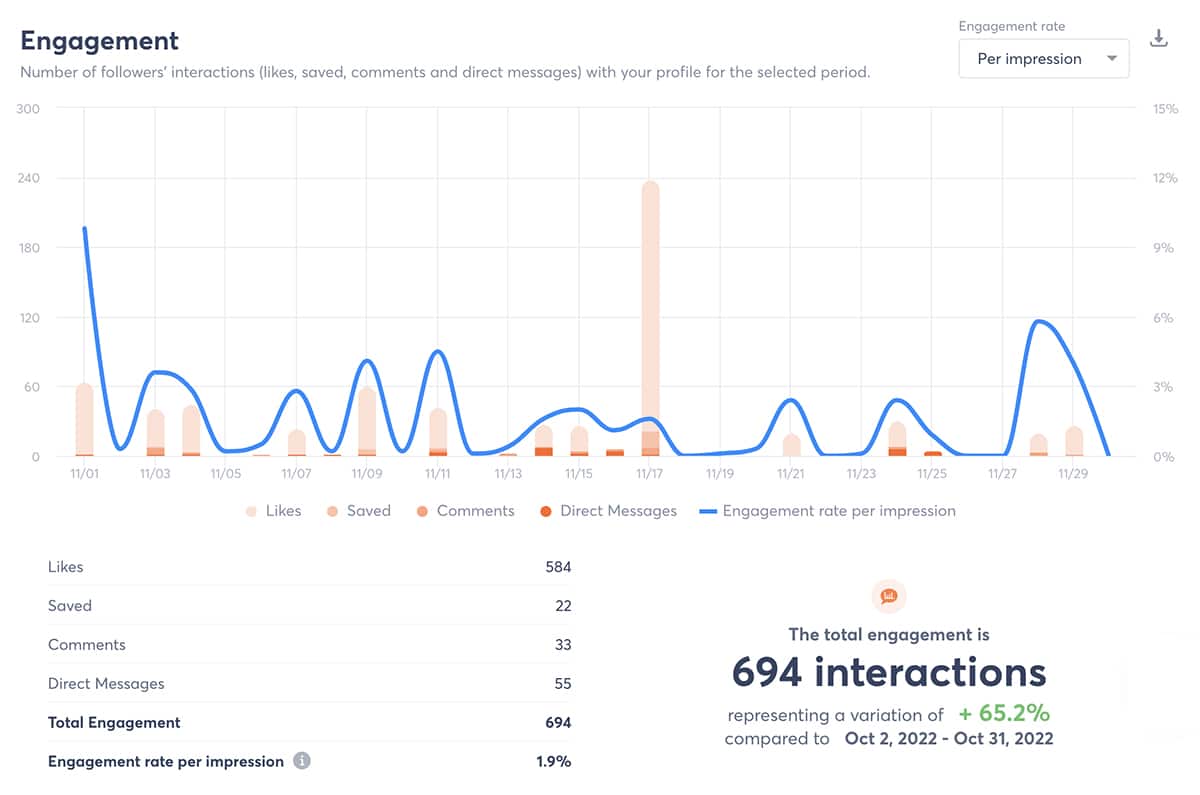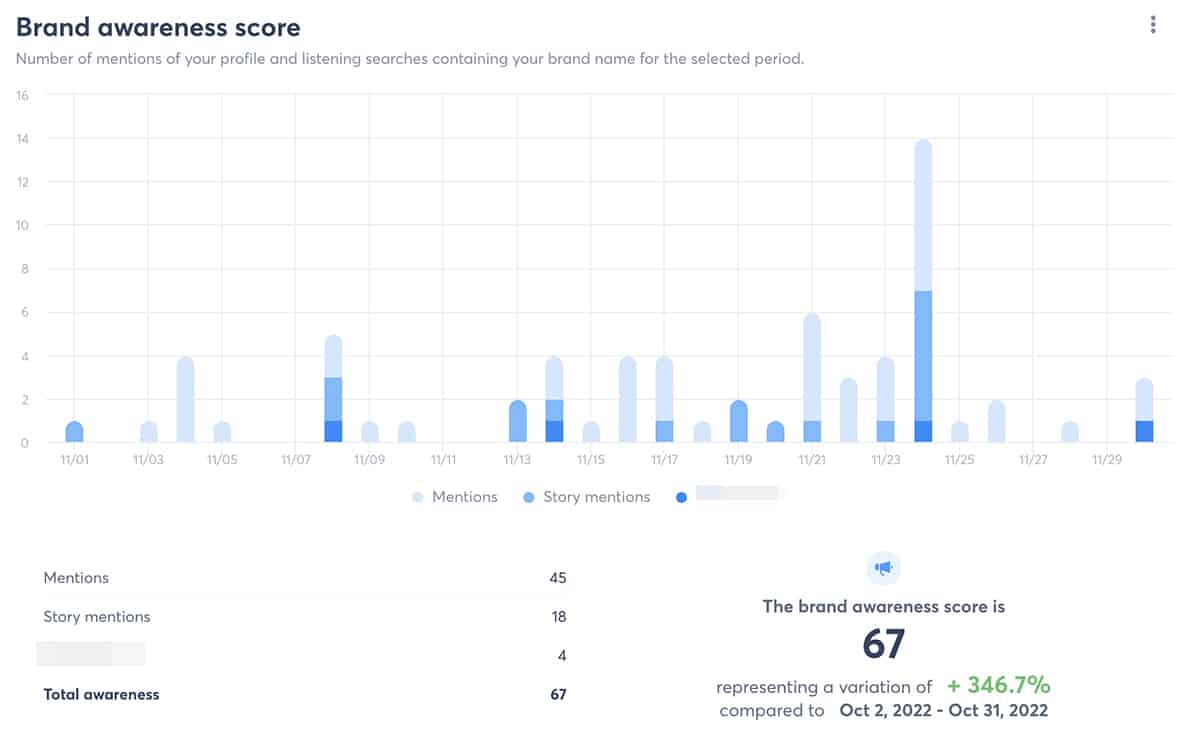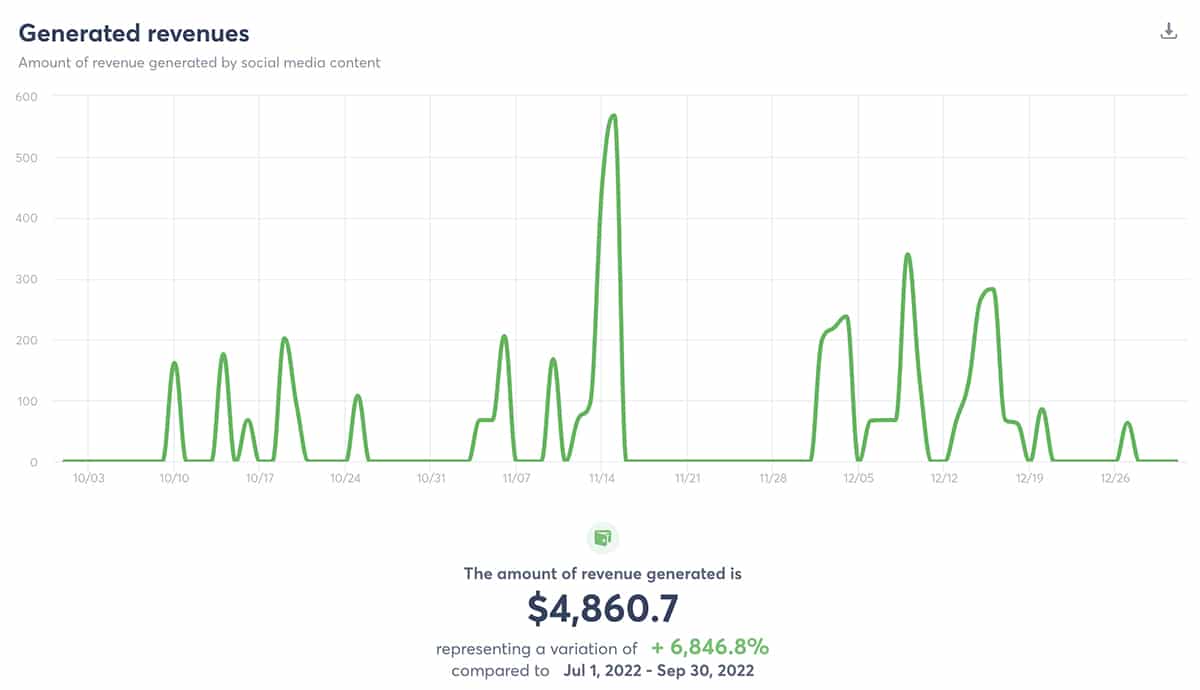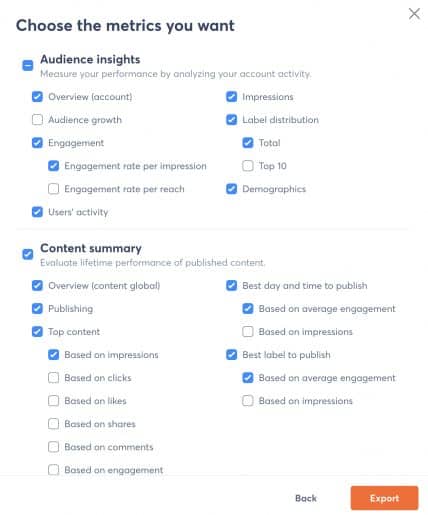Is your team publishing more content than ever across marketing channels—but seeing diminishing returns from all that digital confetti? You might have a content fatigue problem.
It’s tougher than ever to capture attention, get engagement, and attribute revenue on social media. But it’s not impossible to accomplish these tasks, especially when you know the cause and how to address it.
In this article, we’ll cover why content fatigue is a growing problem and actionable ways to overcome it, including a seven-step process for building an ROI-driven content campaign.
If you’d rather listen than read, tune into the webinar hosted by Agorapulse CMO Darryl Praill. This article recaps insights from The Battle for Attention: Engagement in a Content Fatigued World, including takeaways from panelists Robert Rose and Ardath Albee.
What Is Content Fatigue and Why Should Marketers Care?
Content fatigue happens when your audience is confronted with too much content on the channels they frequent. They feel overwhelmed, get tired, and ultimately ignore or block out much of the social media, email, video, and blog content they see. For marketers, content fatigue looks like decreased engagement or even negative feedback. Over time, it can lead to missed key performance indicators (KPIs) and a drop in metrics that make a business impact.
It’s easy to believe that content fatigue is an audience problem stemming from shorter attention spans and growing interest in short-form formats. In fact, the Content Marketing Institute’s (CMI) B2B Content Marketing Report found that over 50% of B2B marketers say it’s become harder to capture the audience’s attention. But it’s also a marketing problem.
The CMI report found that 67% of marketing teams are being asked to do more with the same resources. Teams are producing more content, but it’s missing the mark.
As Robert explains, creating content has become “everybody’s job and nobody’s strategy.” Production has become more haphazard and disconnected, yet content is still expected to drive revenue and achieve key goals.
Darryl sees this disconnect instilling fear and reticence in marketers. On the one hand, they’ve had to become media production companies and even video production houses. But on the other hand, they lack the desire and capacity to be on camera. Many marketers end up outsourcing content production, but the results can be disorganized—which can create even stronger feelings of content fatigue and even cynicism.
Ardath perceives that marketing teams feel immense pressure to publish content on every channel. Yet they never take the time to get to know their buyers. For Ardath, “the problem is relevance” since audiences will ignore content that doesn’t matter to them.
Four Ways to Address Content Fatigue
Content fatigue is real, but it doesn’t have to be your reality. Let’s look at four ways to address this issue so your team can optimize their efforts and deliver more value.
1. Prioritize buyer personas
Your marketing team likely relies on buyer personas to create content that resonates with the target audience. But as Darryl states, many of these documents are “paper thin” and lack details or substance. Many are also completely out of date. When was the last time you updated your audience research?
If it’s been more than a month, you could be missing out on a lot of opportunities to connect with potential customers. And if you’ve never updated this research, it’s safe to assume you’re broadcasting a message to people who aren’t listening. What you think is content fatigue might actually be irrelevance.
Audiences aren’t static. They’re always evolving. Think of them as living things that shift based on the economy, popular trends, your marketing efforts, and countless other factors.
Ardath recommends doing buyer research continuously. She emphasizes that marketing teams need up-to-date research to know what the target market wants and how to deliver material in a way that resonates with them.
After all, Ardath explains, “a lot of what we need to do is try to help more than sell.” If you don’t know how to help your ideal prospects and customers today, your results probably won’t be great.
So how often should you review your buyer personas? Ardath recommends updating them every month, or quarterly at the very least.
Revising personas doesn’t have to be as time-consuming as you might think. Robert considers these updates more as iterations, since they require small changes instead of building from scratch every time.
What’s the best way to do this research efficiently? Customer interviews are ideal, but they aren’t always feasible for busy marketing teams. At minimum, Ardath suggests listening in to sales calls to understand the problems buyers are facing now.
2. Create content narratives to conquer content fatigue
One of the biggest problems with pushing marketers to produce and publish more is that these teams don’t always have the tools or capacity to create a cohesive narrative. It’s especially tough for marketers to tell a bigger story when they’re taking direction from siloed stakeholders.
Producing more posts isn’t always a good thing, especially when they’re “random acts of content,” as Ardath calls them. If the content your team produces doesn’t tie together or focuses too much on trending topics, it probably won’t make a business impact.
Robert cautions CMOs against focusing too much on increasing content quantity. He explains that too many executives “conflate content with digital assets” when they’re completely different categories. “What we end up in the business of is producing more and more and more digital assets without the thought of the content behind it.” He recommends thinking about the content or story first, and then focusing on the asset.
Don’t stop there. Distribution is also a crucial consideration. Ardath explains that without distribution, you’ll have to wait for your target audience to find key content on your website—which may never happen at scale.
When planning content, assets, and distribution, put your audience first. Make sure you know where you’re most likely to reach them and which content formats they prefer.
The CMI report found that social media is the top channel for content distribution and promotion, and video is the top-performing content type.
But be careful with an all-in approach. Ardath cautions: “if you put all your eggs in one basket you’re doing yourself a disservice.” So while it may make sense to prioritize distributing content via short-form videos across social media, most campaigns will benefit from multiple types of media and more than one channel.
Sign up for a free Agorapulse DEMO to see all you can do with content.
3. Build operational processes
When your teams exist in separate silos, it isn’t easy to keep everyone on the same page or work from a standard process. That can lead to a lot of wasted time and energy.
As Robert explains, demand generation, account-based marketing (ABM), and other teams typically don’t have a content strategy. They often do have a point of view on how and when it should be created. Yet a point of view isn’t a strategy.
Ardath confirms that this issue is often an executive problem. In many cases, C-suite executives place demands on these teams, and marketers have to execute a constant stream of one-off requests.
The result, Robert explains, is that operational systems don’t exist. Marketers make up processes as they go, but there’s nothing standard about it.
Robert recommends that businesses establish standard operating procedures (SOPs) that support the importance they place on the content they create. These SOPs should be easy to repeat.
However, Ardath cautions against making these processes overly complex. She explains that too much operationalization requires too many steps and approvals. As a result, businesses move too slowly and miss out on opportunities to deliver relevant content.
4. Establish an attribution model
Building a solid system for producing and distributing content that resonates with your target buyer is a major achievement. But how do you know if your process is working?
The final pieces of the content fatigue puzzle are measurement and attribution.
For many CMOs, these are the most challenging pieces to put together. As Darryl explains, many marketing executives have enough trouble staffing their teams and producing content, making measurement and attribution afterthoughts.
Yet marketing attribution is inherently tricky, and it’s becoming more so. Marketing channels often make tracking customers difficult, and audience behaviors don’t always follow a straight line.
Dark social is particularly hard to measure because it depends on private shares. Ideally, you want those private shares because they can add credibility and social proof to your content, which can influence buyers.
So how do you leverage dark social? Ardath recommends leaning into a compelling narrative. When prospects discover your content, you want them to be interested enough in the story to keep clicking and exploring your website or social channels.
It’s also important to use available measurement tools. An Agorapulse study found that although social media is considered the most successful distribution channel, only 1.8% of posts include link tracking.
With link tracking, you can quantify the outcomes of your social media posts. In addition to counting clicks, link tracking measures campaigns, attributes conversions, and helps you understand the value of your social media posts.
Whether or not you already have a UTM strategy, Agorapulse makes it easy to track links. Below, we’ll cover how to add UTMs to social media posts, comments, and messages.
Because link tracking aligns with value, it provides insights that stakeholders care about. Focusing on this approach also helps you move past vanity metrics, which have no real business impact.
How to Build an ROI-Driven Content Campaign: 7-Step Process
You’ll need to find an approach to attribution and operations that works for your business. With Darryl’s 7-step framework, you can map out the basics of the process so your team can build campaigns that drive measurable results.
1. Identify goals
Start with what you want to achieve and when. Think about the who, what, when, where, and why for your campaign. The SMART goal framework can be helpful for getting clear on these objectives.
Here’s an example:
- Who: HR and operations managers for small businesses with remote or hybrid teams.
- What: Generate 500 leads who fit the ideal customer profile (ICP) using a series of lead magnets.
- When: By the end of Q3.
- Why: We need to sign 100 new customers by the end of Q4. Our average conversion rate is 20%, and our typical sales cycle is 90 days, so 500 qualified leads should allow us to meet this goal.
2. Research audiences and keywords
Reference your most recent audience research, which you ideally completed within the last month. What kinds of questions is your audience asking? What are their biggest challenges? How can you help them rather than sell to them?
Make note of some topics or keywords you can use as the foundation of the campaign.
Keyword research is helpful for building campaigns, even if optimizing for search isn’t your top priority. SEO tools can help you identify topics, angles, and search intent—all of which can help you create great content.
In the example keyword analysis below, we can see that the search intent is commercial. We can use the keyword variations and questions to frame the topic and answer questions the audience is likely to have.
3. Decide on the right content for the audience
Next, think about the content you’ll create for the campaign. How can you best tell the story? For example, it might make sense to produce:
- Blog posts
- Whitepapers
- Webinars
- Podcasts
- Branded videos
- Guides or checklists
Keep in mind that you may need to tell the story a few different ways. By repurposing your content into different formats, you can improve accessibility and ensure the story resonates with a bigger portion of your target audience.
4. Choose the right channels for the campaign
If you’ve been updating your audience research regularly and acting on those insights, you won’t need to think too hard about campaign channels. Consider the channels you’re already using and identify those where you’ve had the greatest success.
When planning channels, think about frequency and format. Here are a few examples:
- LinkedIn: Post three branded videos per week to company page, and share from executive profiles along with a personal story.
- Facebook Group: Publish one text post per day from community manager account, with lead magnet link in the comments.
- YouTube: Post one webinar to company channel, and repurpose into nine shorts over the course of three weeks.
If you’re planning to distribute across social media channels, Agorapulse can help. With our social media solution, you can upload creative assets to the asset library, create posts in the post composer, and get approval from your team before publishing.
5. Track campaign links
Unless you’re planning to post to a social media channel that doesn’t support links (i.e., Instagram), always add UTM codes to your content. These code snippets automatically track source and behavior, which are essential for measurement and attribution.
Once you’ve connected a Google Analytics account to Agorapulse, you can track links in the post composer. Add a link to a post, and then click the Untracked option to track the link.
Select a preexisting campaign or create a new one in a few seconds. Enter the name of the campaign and configure the source and medium settings. Then choose whether to display the link in full or shorten it to make it look cleaner.
6. Report, analyze, and revise
Once the campaign launches, you can track social media engagement and ROI directly in Agorapulse. Use your campaign goals to guide the metrics your team monitors.
For example, audience growth might not matter for a lead generation campaign, but comments, clicks, and DMs can signal whether the content is resonating with your audience.
Social media engagement metrics like mentions and hashtag usage can reveal whether your audience is amplifying your campaign.
Agorapulse’s ROI report is your ticket to measuring the value from those clicks. The report displays total visitors, transactions, and revenue for all across social media.
It also displays the value from tracked posts and conversations (yes, you can add link tracking in the Agorapulse inbox too) so you know which campaign elements drove the most value.
What worked? What didn’t? Use the results to optimize the rest of your campaign or plan the next one.
7. Share results with stakeholders
Finally, share your insights with key stakeholders. Build a custom social media report for stakeholders in Agorapulse or simply remove vanity metrics from the standard report.
You can also export ROI reports from the Agorapulse dashboard. Remember to add your takeaways so stakeholders get the complete story.
Wrapping Up What We Learned About Content Fatigue
If your team has noticed a drop in engagement or conversions on key marketing channels, your audience might be experiencing content fatigue. By prioritizing your buyers, focusing on the metrics that matter, and creating repeatable processes, you can overcome social media fatigue and produce content that makes a business impact.
![How to Drive Engagement in a Content-Fatigued World [INFOGRAPHIC]](https://static1.agorapulse.com/blog/wp-content/uploads/sites/2/2023/06/Get-Engagement-in-a-Content-Fatigued-World-Pinterest-scaled.jpg)
![Featured image of How to Drive Engagement in a Content-Fatigued World [INFOGRAPHIC] get engagement in a content-fatigued world blog header](https://static1.agorapulse.com/blog/wp-content/uploads/sites/2/2023/06/Get-Engagement-in-a-Content-Fatigued-World-Blogpost-Header-992x420.jpg)


